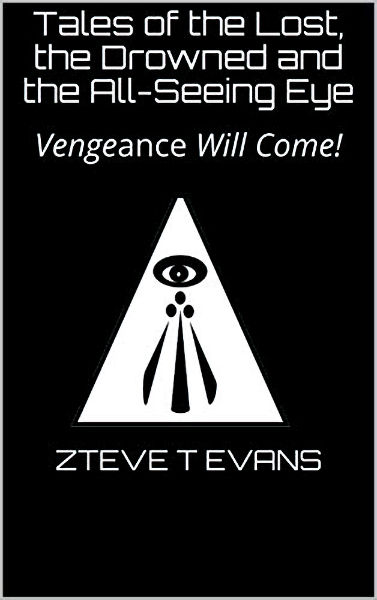Trentren And Caicai: The Battling Serpents Of Chilote Mythology
Zteve T Evans - AncientPages.com - The Chiloé Archipelago, off the coast of Chile, is inhabited by a mixture of Chono, Huilliche, and Cunco people, who brought their unique beliefs and mythologies to the islands. These merged to form a dynamic expression of the natural forces they saw in action all around them that created and continues to shape the islands today. Later, this natural lore blended with European superstition and witchcraft in a vibrant collection of traditions, mythology, and folk wisdom. The following is an ancient myth told by the Indigenous islanders explaining how a titanic battle between two gigantic serpents created the Chiloé Archipelago and the rugged coastline of Chile.
There are several variations to the names of the serpents, but here they are called Trentren Vilu and Caicai Vilu. According to this myth, Trentren had the aspects of a land serpent and governed the land and management of the terrestrial ecology and all land dwellers, including human beings. Caicai had the elements of a marine serpent and ruled the sea. He had all fish and marine life under his authority and managed the ocean ecology. Like their fathers, the two sons were enemies whose hostility towards one another sometimes exploded into violence.
The Battle Of Trentren Vilu And Caicai Vilu
One morning after waking, it appeared to Caicai that humans lacked gratitude for all the bounties they received from the sea. This made him angry. Furiously, he smashed his huge tail up and down in the water with so much power he caused a great flood that washed over the land. Seeing the results of his rage, he decided to punish humans for their lack of gratitude. He continued flailing the water with his tail intending to sweep them from the land into the sea, while simultaneously ordering the waters to rise. All the humans and other land dwellers were terrified and cried out for help fearing they would drown.
On seeing the catastrophe Caicai was causing and hearing the cries of humans and animals, Trentren sought to save them. He took all the land dwellers onto his back and transported them to high hills where they would be safe from the deluge and destruction. However, not all could make the safety of his back, so he turned those into birds allowing them to fly into the air to escape the flood.
Seeing Trentren helping the people and animals enraged Caicai further. He commanded the sea to rise higher, intending to drown all the land-dwellers. To counter this, Trentren commanded the hills to swell and grow to make up for the ground lost to the deluge.
After The Flood
Seeing his plan thwarted, Caicai attacked Trentren. The titanic struggle lasted for eons until both serpents were finally exhausted. Trentren's intervention ended Caicai's flood saving the humans and the other land dwellers. However, he could only claim partial victory because the waters did not return to their original level, changing the geography of land and sea.
Caicai was tired after the titanic struggle but was satisfied with what he had managed to achieve. To conserve his strength for future battles, he made the Millalobo the King of the Sea to take charge of the fish and the marine creatures. Those humans who Trentren missed who did not reach the safety of his hills, he turned into fish, marine mammals, or mythical beasts.
Statue of Trentren Vilu. Credit: Lufke - CC BY-SA 3.0
Although the conflict stopped for a while, it did not last. This time it was Trentren who woke one morning and noticed that humans were ungrateful for the bounties they received from the land and were treating it with disrespect. His anger made the earth shake and fragment, and volcanoes erupt, causing the frightened humans to move to safer places to dwell. The battle of Trentren and Caicai resumed shifting and shaping the shape of the land and waters until they both finally tired.
While Trentren causes earthquakes and volcanoes on the land, Caicai causes tsunamis, tidal waves, and sea floods. Fortunately, these times of cataclysmic upheaval caused by the two colossal serpents have eventually subsided for periods. During these times of peace, land and sea inhabitants had time to recover, and marine and terrestrial environments could stabilize.
A Cuncos Version
Another version of the myth comes from the Cunco people telling of a titanic struggle between two colossal serpents. One was good and called Trentren and lived on the land in a mountain. The other was evil and named Caicai and lived in the sea.
This work explores legends of towns, cities, islands and lands lost to the sea or buried by sand or snow. Along with the legend of the loss very often comes a myth of origin of a feature of the landscape, such as a lake, massive dune or ocean reef. As well as exploring mythical and legendary examples we look at real towns and places in history that were disastrously wiped out. In many cases we find there is a simple but powerful message that our behaviour is constantly monitored and judged. Any transgression of God's laws will not go unnoticed by the all-seeing eye. We will be judged and punished accordingly in a time and manner that suits the divine will. Vengeance will come! Read more
A time came when Caicai attempted to flood the earth while Trentren slept. The people tried to wake the sleeping serpent but to no avail. Seeking to increase the damage, Caicai called on the spirits of Wind, Thunder, and Fire to ravage across the land, causing horrific destruction.
The people realized the only being powerful enough to stop the devastation the evil Caicai was causing was his twin and opposite, Trentren. As the situation became increasingly desperate, the people tried harder and harder to wake Trentren but were unsuccessful no matter what they tried.
Statue of Trentren Vilu. Credit: Lufke - CC BY-SA 3.0
Both serpents had no eyelids and so slept with their eyes open. As Trentren slept, his eyes open, a young girl saw her image mirrored in his eye and danced with her reflection. As she danced, she laughed, and her laughter finally roused the sleeping serpent to action.
The intervention of Trentren further infuriated Caicai, who redoubled his efforts by shattering the land and throwing the broken fragments into the sea. These broken fragments became the scattered islands of the Chiloé Archipelago. With tremendous effort Trentren raised the mountain higher and higher into the sky. Caicai and the spirits of Wind, Thunder, and Fire fell from the peak into an abyss, ending their destruction. (1)
Further Battles
There are still times when the two colossal serpents resume the battle, which can be seen through violent upheavals on land and under the sea, causing earthquakes, volcanoes, and tsunamis. These splinter and fracture land above and below the sea, changing the coastlines and causing the waters to rage and swell uncontrollably. When one serpent is violently destructive, the other acts in opposition, trying to prevent wholesale destruction and restore balance. The conflict has been raging intermittently since the beginning of time and will continue this way until its end.
Written by Zteve T Evans - AncientPages.com
Zteve T Evans - enjoys researching deep into the folklore, myths and legends that run through society and are part of our everyday lives and has written extensively for the #FolkloreThursday website He always finds it a source of fascination discovering and learning how our ancestors perceived the times they lived in and how they have influenced us today. Zteve believes that people have far more in common with each other than is often shown on the surface and this can often be seen in the folktales from other parts of the world. Zteve has two websites dedicated to myths, legends, and folklore from around the world. These are Under the influence! and Folkrealm Studies. He has also contributed to Enchanted Conversation Magazine. and runs Tellurian Studies, a site dedicated to issues concerning the environment, geology, ecology, biology, archaeology and any other branch of science that effects the planet and its inhabitants.
Copyright © Zteve T Evans - AncientPages.com All rights reserved. This material may not be published, broadcast, rewritten or redistributed in whole or part without the express written permission of Zteve T Evans and AncientPages.com
More From Ancient Pages
-
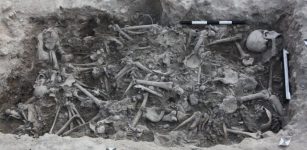 DNA Of Nine 13th Century Crusaders Provides A Glimpse Into Soldiers’ Life And Death
Archaeology | Apr 22, 2019
DNA Of Nine 13th Century Crusaders Provides A Glimpse Into Soldiers’ Life And Death
Archaeology | Apr 22, 2019 -
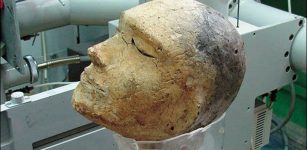 Mystery Of Unique 2,100-Year-Old Human Clay Head With A Ram’s Skull Inside
Archaeology | Apr 18, 2020
Mystery Of Unique 2,100-Year-Old Human Clay Head With A Ram’s Skull Inside
Archaeology | Apr 18, 2020 -
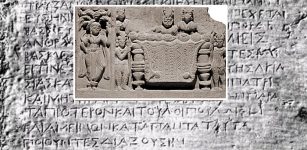 Robots Guarded Buddha’s Relics In Ancient India – Legend Tells
Featured Stories | Jun 28, 2019
Robots Guarded Buddha’s Relics In Ancient India – Legend Tells
Featured Stories | Jun 28, 2019 -
 LIDAR Discovers Mysterious Maya Underground Chamber In The Rainforest
Archaeology | Jul 22, 2024
LIDAR Discovers Mysterious Maya Underground Chamber In The Rainforest
Archaeology | Jul 22, 2024 -
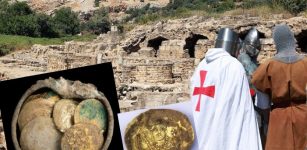 Treasure Hoard Of Rare Gold Coins From The Crusader Conquest Discovered In Caesarea, Israel
Archaeology | Dec 8, 2020
Treasure Hoard Of Rare Gold Coins From The Crusader Conquest Discovered In Caesarea, Israel
Archaeology | Dec 8, 2020 -
 Treasure Trove Of Spices Found On The Sunken Medieval Ship Gribshunden
Archaeology | Feb 11, 2023
Treasure Trove Of Spices Found On The Sunken Medieval Ship Gribshunden
Archaeology | Feb 11, 2023 -
 4000-Year-Old Egyptian Leather Manuscript Forgotten For More Than 70 Years – Found
News | Sep 14, 2015
4000-Year-Old Egyptian Leather Manuscript Forgotten For More Than 70 Years – Found
News | Sep 14, 2015 -
 Qanat Firaun -‘Canal Of The Pharaohs’ Is The Ancient World’s Longest Underground Tunnel
Featured Stories | Mar 10, 2022
Qanat Firaun -‘Canal Of The Pharaohs’ Is The Ancient World’s Longest Underground Tunnel
Featured Stories | Mar 10, 2022 -
 Latin America’s Oldest Beer Resurrected From 400-Year-Old Yeast
Archaeology | Aug 4, 2022
Latin America’s Oldest Beer Resurrected From 400-Year-Old Yeast
Archaeology | Aug 4, 2022 -
 Mysterious Death Of 20 Celts Who Died 2,000 Years Ago In The Three Lakes, Switzerland – Re-Examined
Archaeology | Jun 17, 2024
Mysterious Death Of 20 Celts Who Died 2,000 Years Ago In The Three Lakes, Switzerland – Re-Examined
Archaeology | Jun 17, 2024 -
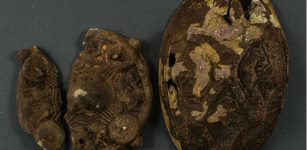 Family Looking For Lost Gold Ring Finds Viking Age Artifacts In Their Garden On The Island Of Jomfruland
Archaeology | Sep 30, 2023
Family Looking For Lost Gold Ring Finds Viking Age Artifacts In Their Garden On The Island Of Jomfruland
Archaeology | Sep 30, 2023 -
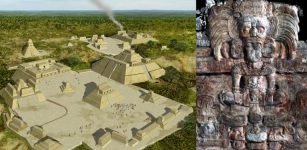 Mysterious Maya Snake Kings And Their Powerful Kingdom In The Jungle Reveal More Ancient Secrets
Civilizations | Apr 23, 2018
Mysterious Maya Snake Kings And Their Powerful Kingdom In The Jungle Reveal More Ancient Secrets
Civilizations | Apr 23, 2018 -
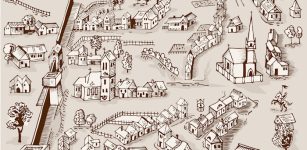 Wolstenholme Towne: Lost Virginia Settlement – Destroyed, Abandoned And Forgotten
Featured Stories | Jun 26, 2018
Wolstenholme Towne: Lost Virginia Settlement – Destroyed, Abandoned And Forgotten
Featured Stories | Jun 26, 2018 -
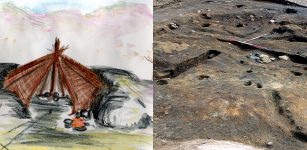 Stone Age People Lived In Reused Houses – Not Just Caves – Discovery In Norway Reveals
Archaeology | Jan 26, 2018
Stone Age People Lived In Reused Houses – Not Just Caves – Discovery In Norway Reveals
Archaeology | Jan 26, 2018 -
 Forbidden Knowledge: Secret Ancient Gates Of The Shining Ones – More Surprising Discoveries – Part 3
Ancient Mysteries | Jul 19, 2019
Forbidden Knowledge: Secret Ancient Gates Of The Shining Ones – More Surprising Discoveries – Part 3
Ancient Mysteries | Jul 19, 2019 -
 Reconstructing The Lost Ancient World Of The Marquesas Islands With Unique Plants And Animals
News | Mar 31, 2022
Reconstructing The Lost Ancient World Of The Marquesas Islands With Unique Plants And Animals
News | Mar 31, 2022 -
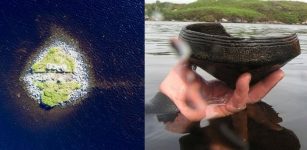 Crannogs – Artificial Islands In Scotland Are Older Than Stonehenge
Archaeology | Jun 17, 2019
Crannogs – Artificial Islands In Scotland Are Older Than Stonehenge
Archaeology | Jun 17, 2019 -
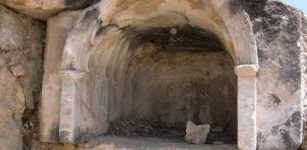 Plutonium: Dangerous Pluto’s Gate Was An Ancient Gateway To Hell At Hierapolis That Was Real
Featured Stories | Feb 18, 2017
Plutonium: Dangerous Pluto’s Gate Was An Ancient Gateway To Hell At Hierapolis That Was Real
Featured Stories | Feb 18, 2017 -
 Rock Stars: How A Group Of Scientists In South Africa Rescued A Rare 500 Kg Chunk Of Human History
Featured Stories | Oct 20, 2022
Rock Stars: How A Group Of Scientists In South Africa Rescued A Rare 500 Kg Chunk Of Human History
Featured Stories | Oct 20, 2022 -
 Only Apocalyptic Destruction Can Eliminate The Gap Between Rich And Poor – Historian Says
Featured Stories | Jun 6, 2018
Only Apocalyptic Destruction Can Eliminate The Gap Between Rich And Poor – Historian Says
Featured Stories | Jun 6, 2018



